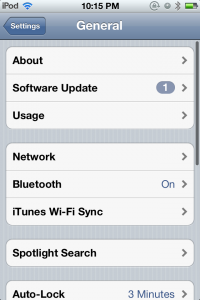How To: Update iOS to the Latest Version
This week, Apple released iOS 5.1.1, which brings some minor bug fixes, particularly to some camera functionality and to AirPlay. Software updates have been made a lot easier since iOS 5 was released, as now small updates like these don't require a full download of the entire iOS software. However, for users not yet on iOS 5, there's still reasons to use iTunes to update. In this latest how-to guide, we'll show you how to update that iOS device.
iOS 5 Software Updates

It's best to charge the device while the update process is going on, so that the device doesn't accidentally lose power during the update. If all goes right, the device will reboot, and a few minutes later, iOS will be up to date. Both my iPod touch 4th generation and iPad 2 had two separate bars pop up while installing the update, so this may be a normal part of the process. Don't freak out.
Updating via iTunes
For those devices still not on iOS 5, or for people that find it more convenient to do this process on the computer, it is still possible to upgrade through the computer. Plug the device into iTunes. Select it from the left sidebar. Then, on the main screen, select Check for Updates. iTunes will find the latest update, and start downloading it.

There are two potential downfalls. One, what if the iTunes used for updating doesn't have internet access? Or, if iTunes has issues downloading the software update quickly? Well, it is possible to download the software update manually and then load it into iTunes. Download the update from some source, such as this site (make sure to download the correct update for the correct device). Then, in iTunes, hold down Shift (Windows) or Option (Mac) and click on the button. A dialog box to open up a file should appear. Open up the previously-downloaded file from this point.
Once on iOS 5 (for devices that support it), this process should not be necessary. However, in cases where it may be, this is good to know how it works as well.


